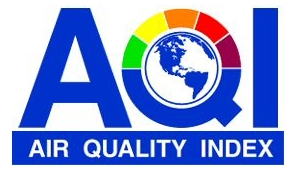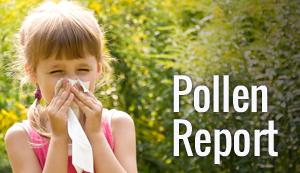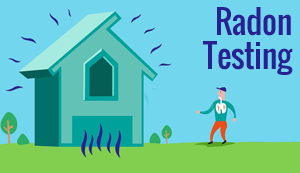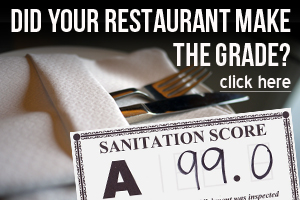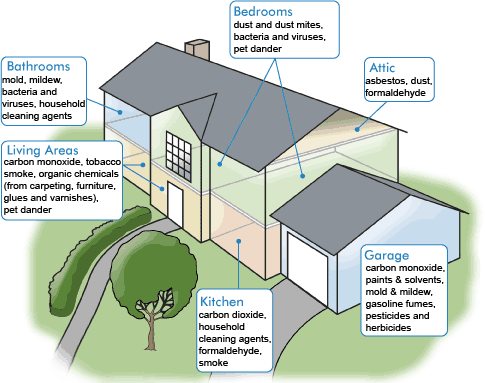
Indoor air has always contained natural and human-made impurities, which can affect
the comfort and health of the building occupants. This page will help you understand
where these pollutants might come from and how you can improve the indoor air quality
of your home or office.
Indoor Air Pollution Brochure
Mold
Molds are a part of our natural environment. They are forms of fungi (microscopic
organisms), grow year round, and can be found indoors and out. Outdoors they can
be found in shady, damp areas or places where leaves or other vegetation is decomposing.
Indoors they can be found where humidity levels are high such as basements or showers.
Mold will grow and multiply under the right conditions, needing only sufficient
moisture (example: in the form of very high humidity, condensation, or water from
a leaking pipe, etc.) and the right material to grow on. Mold growth is encouraged
by warm and humid conditions, although it can grow during cold weather. There are
thousands of species of mold and they can be any color. Molds may be gray, black,
green, yellow, orange, or various other colors and may have a velvety or wooly structure.
Molds produce tiny spores in order to reproduce. Mold spores continually sift through
the air, both indoors and out. When they land on a damp spot they may begin growing
and digesting whatever they are growing on in order to survive. Indoors, molds tend
to grow on porous materials such as wood, sheet rock, insulation, paper, fabrics,
carpet, foods, and other organic materials. Molds gradually destroy some things
they grow on.
View/Print our Mold Brochure
Sources
Mold growth will occur if there is sufficient moisture. Common sources of moisture include:
- Flooding
- Roof leaks
- Humidifiers
- Plumbing leaks
- Drainage problems
- Damp basements & crawl spaces
- Steam from the bathroom or kitchen
- Condensation from a heating/AC unit
- Poor or improper ventilation of combustion appliances
- Condensation resulting from poor or improper insulation or ventilation
Indications of a moisture problem may include discoloration of the ceiling or walls, warping of the floor, or condensation on the walls or windows. The key to preventing mold growth is to control moisture problems.
Health Effects
Exposure to mold can cause health effects in some people. Some people are sensitive to mold and if they inhale or touch mold certain allergic reactions can result. Symptoms such as nasal stuffiness, headaches, throat or eye irritation, coughing or wheezing, or skin irritation may occur. More severe reactions may include fever and shortness of breath. Molds can also trigger asthma episodes in sensitive asthmatics.
Control Methods
The control of moisture and humidity is the key to controlling mold.
- When water leaks or spills occur indoors, ACT QUICKLY.
- If wet or damp materials or areas are dried up 24 – 48 hours after a leak or spill occurs, in most cases mold will not grow.
- Wet carpets should be rolled back and allowed to dry completely.
- Air conditioning drip pans should remain clean and the drain lines unobstructed and flowing properly.
- The ground should slope away from the building foundation so the water does not enter or collect around the foundation or flow into the crawl space or basement.
- Indoor humidity should be kept low, if possible below 60 per cent.
- If condensation or moisture is observed collecting on windows or walls the wet surface should be dried and the water source reduced. Condensation can be a sign of high humidity.
- Appliances that produce moisture should be vented. Clothes dryers, stoves, kerosene heaters should be vented to the outside when possible. These appliances produce water vapor and will increase humidity unless vented to the outside.
- Run the bathroom fan or open the window when showering.
Carbon Monoxide (CO)
Carbon monoxide is a colorless, odorless gas that can be fatal when breathed. Carbon monoxide is produced by the incomplete combustion (burning) of fuels. This can occur several ways:
- When flues or chimneys become blocked so exhaust cannot be vented to the outside.
- When a fuel-burning furnace has a cracked or rusted heat exchanger that allows combustion gases into the living spaces.
- When fuel-burning space heaters (kerosene or gas), ovens, ranges, or grills are operated in the home without adequate ventilation.
- When car exhaust from an attached garage enters the home.
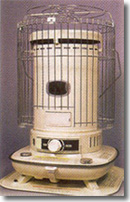 Harmful
buildups of these gases can occur when exhaust from combustion equipment is not
vented to the outside of the home, and when combustion equipment is not in good
working order and is not regularly inspected for safe operation. Some homes may
also have a problem with “backdrafting.” That’s when the air pressure inside the
home is less than the air pressure outside the home, causing combustion by-products
from furnaces, water heaters, fireplaces, and similar equipment to spill back into
the room rather than being vented outside. Backdrafting can also occur when natural
draft appliance exhaust is pulled back into the house by mechanical ventilation
such as a down-draft kitchen power vent.
Harmful
buildups of these gases can occur when exhaust from combustion equipment is not
vented to the outside of the home, and when combustion equipment is not in good
working order and is not regularly inspected for safe operation. Some homes may
also have a problem with “backdrafting.” That’s when the air pressure inside the
home is less than the air pressure outside the home, causing combustion by-products
from furnaces, water heaters, fireplaces, and similar equipment to spill back into
the room rather than being vented outside. Backdrafting can also occur when natural
draft appliance exhaust is pulled back into the house by mechanical ventilation
such as a down-draft kitchen power vent.
For more information, read EPA's Fact Sheet entitled Preventing Carbon Monoxide Poisoning – Information for Older Adults and Their Caregivers.
Health Effects
Carbon monoxide is absorbed through the lungs into the blood where it interferes with the blood’s ability to carry oxygen. At low levels it can cause fatigue in healthy people and chest pain in people with heat disease. At higher levels, carbon monoxide can cause headaches, dizziness, weakness, nausea, and confusion. Very high levels can cause death.
Carbon monoxide symptoms can be similar to the flu. Carbon monoxide may be the problem when you feel bad only when you are inside the home and the symptoms gradually disappear after you have left, or if more than one person in the home has similar symptoms.
Control Methods
To reduce the risk from carbon monoxide keep all combustion equipment well-maintained and inspected for safety. Experts recommend having your combustion heating systems inspected by a trained professional every year. Such inspections should look for blocked openings to flues and chimneys, cracked or disconnected flue pipe, signs of soot around openings in your furnace or boiler, rust or cracks in the heat exchanger, and exhaust or gas odors. Always operate combustion equipment for its intended use and make sure it has been installed properly. Never use unvented combustion appliances indoors (including space heaters), or use a gas stove for heating your house.
Carbon monoxide alarms can be installed which will alert you to dangerous levels of this invisible gas. It is important to choose and place an alarm wisely and maintain it to assure accurate sensing of carbon monoxide.
Radon
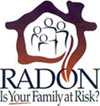 Radon is a colorless, odorless gas that occurs naturally and
is found everywhere at varying low levels. Radon is constantly produced from the
breakdown of uranium in soil or rock.
Radon is a colorless, odorless gas that occurs naturally and
is found everywhere at varying low levels. Radon is constantly produced from the
breakdown of uranium in soil or rock.
Sources
The most significant source of radon in homes is the underlying soil. Radon gas in the soil can enter homes through dirt crawlspaces, cracks in the basement walls or floors, floor drains, or sumps. The air pressure inside a house is typically lower than the pressure in the air and in soil around the building. This difference in pressure causes the home to exert a slight “vacuum effect” that draws radon gas into the home. If water is supplied to a home from an underground well, there is a chance that radon may enter the home in the water supply. Typically the health risk from radon entering a home through the water is much less than the risk of radon entering the home through the soil.
Health Effects
Exposure to radon increases the risk of lung cancer.
Control Methods
All homes should be tested for radon to know if there is a radon problem. If radon levels are high, the problem is fixable. There are several proven methods to reduce radon levels in homes, but the one most commonly used is a vent pipe system and fan, which pulls radon from beneath the house and vents it to the outside. The cost depends on your home’s location, construction, and levels of radon. The U. S. Environmental Protection Agency advises that steps be taken to reduce radon levels in the home if the levels are at or above 4 picocuries per liter of air (pCi/l).
Short and long term radon test kits are available to the public at minimal cost ($14.00 per kit) from the Office of Environmental Assistance and Protection. A Radon Specialist is also available to answer questions about radon and to assist you in obtaining the proper type and number of test kits for your particular home or building. For information call (336) 703-2440 and state that you have a radon question/problem.
Learn for more information on our Office’s radon program including more information on testing.
Asbestos
Asbestos is a name given to a group of naturally occurring minerals found throughout the world. The asbestos mineral is composed of bundles of fibers that are very durable, heat resistant, and noise absorbing. Asbestos products have proven to be very resilient and have been used in building products since the late 1800’s. In 1971 asbestos was declared unsafe and listed as a hazardous air pollutant by the United Stated Environmental Protection Agency. Asbestos have proven to be superior over other materials as long as it remained intact. When asbestos is disturbed and becomes air-borne and an individual inhales it severe health problems could result.
Sources
 Asbestos
has been banned from some products and voluntarily removed from others but still
remains in thousands of products, homes, and buildings. It is also still being used
in some products being manufactured today. Asbestos is common in buildings built
prior to 1980 and can be found in buildings built beyond 1980. Asbestos has been
used in pipe and boiler insulation, floor tile and floor coverings, ceiling materials
including sprayed on texturing and tiles, and roofing and cementous products. Most
times asbestos can be in a product and can not be determined by sight.
Asbestos
has been banned from some products and voluntarily removed from others but still
remains in thousands of products, homes, and buildings. It is also still being used
in some products being manufactured today. Asbestos is common in buildings built
prior to 1980 and can be found in buildings built beyond 1980. Asbestos has been
used in pipe and boiler insulation, floor tile and floor coverings, ceiling materials
including sprayed on texturing and tiles, and roofing and cementous products. Most
times asbestos can be in a product and can not be determined by sight.
Health Effects
Health effects resulting from exposure to asbestos depend on many factors. Normally the greater the exposure, the greater the chance of getting an asbestos-related disease. Most health effects related to asbestos also have a latency period meaning that health problem from exposure to asbestos have a delayed effect and may not appear for fifteen to forty years.
Control Methods
Asbestos materials are not a hazard unless they are in a condition where the fibers can become air-borne. If asbestos is in a product such as flooring that is in good condition there is no need to remove it. If not done properly, replacing the asbestos flooring can be a bigger hazard than if it was left intact on the floor. Asbestos does not have to be removed but if it is, it should be handled properly by someone trained to work with it.
Formaldehyde
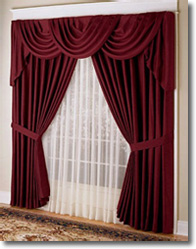 Formaldehyde
is a colorless gas which has a distinctive, pungent odor at higher concentrations.
It has a number of useful properties, is a good preservative and products made with
formaldehyde make an excellent adhesive. It is widely used in some products in the
building and furniture industries and is also found in some textile products as
an anti-wrinkle agent.
Formaldehyde
is a colorless gas which has a distinctive, pungent odor at higher concentrations.
It has a number of useful properties, is a good preservative and products made with
formaldehyde make an excellent adhesive. It is widely used in some products in the
building and furniture industries and is also found in some textile products as
an anti-wrinkle agent.
Sources
Formaldehyde is released from some household products such as plywood, particleboard, draperies, wallpaper, furniture fabrics, glues and adhesives, tobacco smoke, some personal care products, and some foam insulation. As these materials age, they generally stop releasing significant amounts of formaldehyde.
Health Effects
Short term, low-level exposure may cause temporary eye, nose, and throat irritation. Some people may become more sensitive to formaldehyde after an initial exposure.
Control Methods
Formaldehyde exposure can be reduced by avoiding products that contain formaldehyde or buying low-emitting formaldehyde products. Where new formaldehyde-containing products have been installed, ventilation can be temporarily increased. High humidity and high temperatures will increase the rate at which formaldehyde escapes from materials. Air-conditioning and dehumidification may help to reduce formaldehyde.
Environmental Tabacco Smoke (ETS)
 ETS is a complex mixture of over 4700 chemical compounds, including
gases and particles, from incompletely burned tobacco.
ETS is a complex mixture of over 4700 chemical compounds, including
gases and particles, from incompletely burned tobacco.
Sources
Environmental tobacco smoke is the secondhand smoke exhaled by smokers and the sidestream smoke from the burning of cigarettes, cigars, and pipes.
Health Effects
According to the USEPA, short term exposure to ETS can irritate the eyes, nose, and throat. Long-term exposure can cause respiratory problems, such as wheezing, bronchitis, pneumonia, and lung cancer. Asthma attacks may be precipitated by respiratory irritation or infections related to ETS exposure.
Control Methods
ETS can be totally removed from indoor air only by removing the source: cigarette, cigar, and pipe smoking. A separate smoking area, mechanical ventilation, or air cleaners may reduce, but will not eliminate non-smokers exposure to ETS.
Lead
Lead is a naturally occurring soft metal that was once widely used in gasoline, paint, and plumbing fixtures. Lead was used in house paint until 1978 when it was banned. Lead solder for pipes was also banned, but there are plenty of older homes with these high lead materials still in them.
Sources
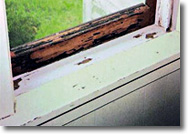 Lead
can be found in paint, dust, soil, and water. Lead poisoning in homes most commonly
occurs when a child eats paint chips, sucks on lead-dusted hands and toys, or chews
on lead painted window sills and stair rails. In most cases lead based paint in
good condition is not a hazard. In most cases, older homes have been painted multiple
times resulting in the older lead based paint being covered several times and therefore,
less of a hazard. Renovation and home remodeling projects should take lead paint
into consideration especially if sanding or sand-blasting of paint is being planned.
Sanding and sand-blasting of lead based paint can emit lead dust into the air and
create a hazard. Drinking water may also contain lead from old pipes or solder,
particularly if the water is soft, corrosive, or acidic. The longer water stands
in pipes, the greater the possibility of lead being dissolved in it. Other potential
sources of lead exposure include hobbies (such as working with stained glass), food
and liquids stored in lead crystal, lead-glazed pottery or porcelain, and indoor
target ranges.
Lead
can be found in paint, dust, soil, and water. Lead poisoning in homes most commonly
occurs when a child eats paint chips, sucks on lead-dusted hands and toys, or chews
on lead painted window sills and stair rails. In most cases lead based paint in
good condition is not a hazard. In most cases, older homes have been painted multiple
times resulting in the older lead based paint being covered several times and therefore,
less of a hazard. Renovation and home remodeling projects should take lead paint
into consideration especially if sanding or sand-blasting of paint is being planned.
Sanding and sand-blasting of lead based paint can emit lead dust into the air and
create a hazard. Drinking water may also contain lead from old pipes or solder,
particularly if the water is soft, corrosive, or acidic. The longer water stands
in pipes, the greater the possibility of lead being dissolved in it. Other potential
sources of lead exposure include hobbies (such as working with stained glass), food
and liquids stored in lead crystal, lead-glazed pottery or porcelain, and indoor
target ranges.
Health Effects
Some health effects associated with exposure to lead include nerve and brain damage, anemia, kidney damage, and growth retardation. All children up to six years old should be tested for lead poisoning if their doctors think they are at risk. Children are at a higher risk from lead exposure because they put their hands in their mouth, their growing bodies absorb more lead, and their brains and nervous systems are more sensitive to the damaging effects of lead. If lead gets into a child’s body, it could cause a lower IQ, kidney damage, hearing loss, headaches, slowed growth, anemia, or behavior problems.
Control Methods
Deteriorating paint or high levels of dust can pose a hazard in homes with lead paint. Paint chips should be cleaned up immediately and excessive dust should be cleaned regularly. Paint suspected to contain high levels of lead should not be removed by dry scraping, belt-sanding, propane torch, or heat gun because these actions generate large amounts of dust and fumes.


